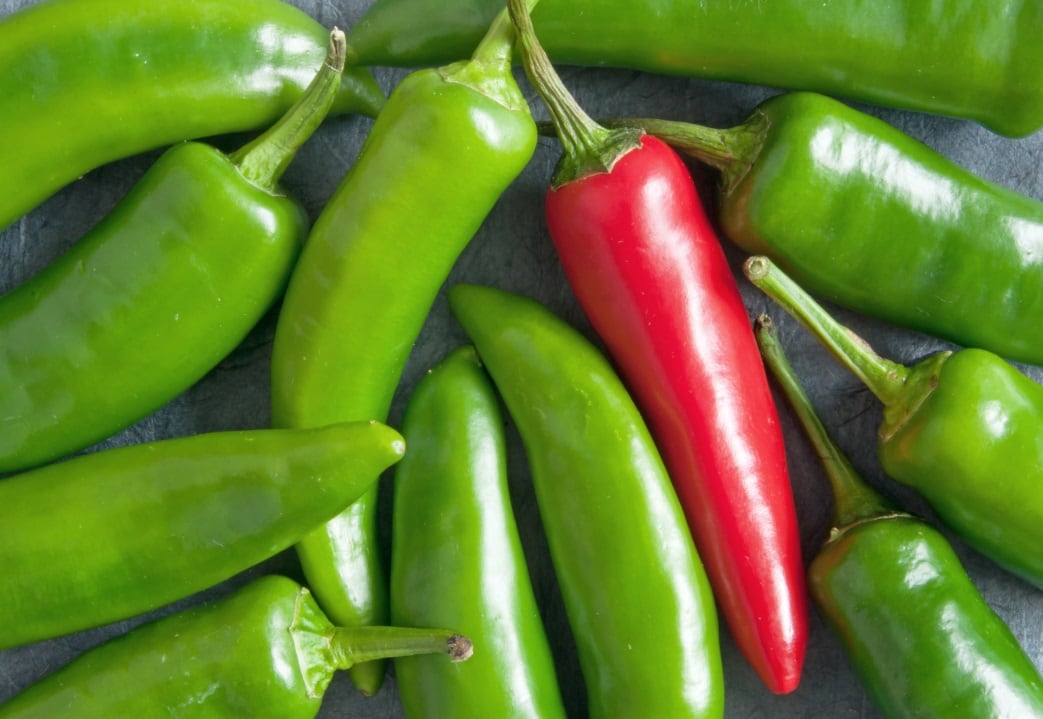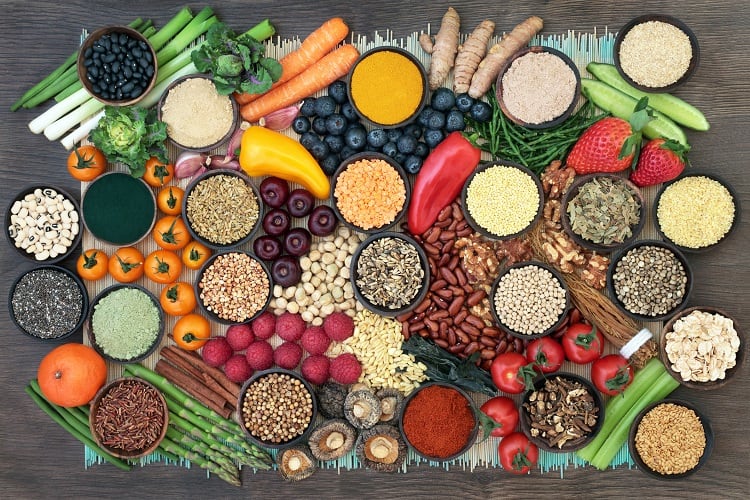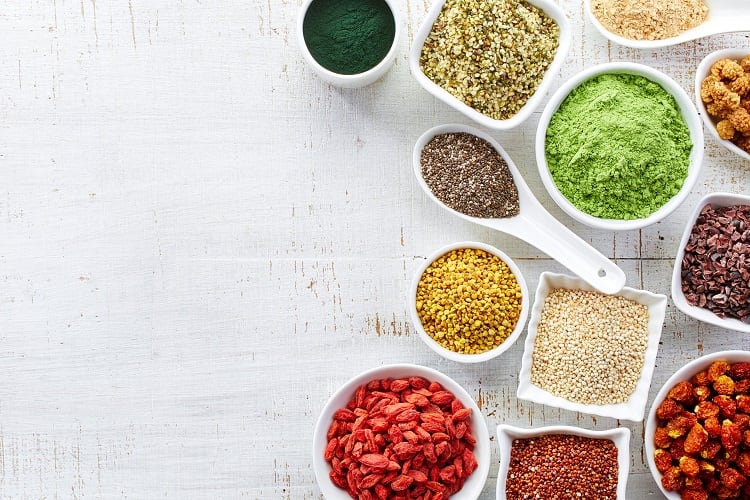Flavour and colour are important aspects of any food product and go a significant way towards determining the success or failure of new product launches. These sensory attributes enable brands to engage with consumers on a number of levels, providing a unique experience and competitive edge.
We take a look at the top trends informing innovation in flavours and colours and the drivers supporting them.
#1: ‘Bold and exciting’ colours and flavours

Increasingly adventurous consumers, exposed to global cuisines and looking to share their food experiences online, are driving interest in ‘bold and exciting’ flavours and colours.
The combination of ‘bold flavours’ with ‘dramatic colours’ can help brands stand out in a crowded marketplace, Mintel food and drink analyst Regina Haydon suggested.
“Flavours can give brands competitive edge, create exciting experiences for consumers… Social media is a key driver for ‘Instagrammable’ food and drink. Young consumers in particular seek visually attractive, 'share-worthy' food and drink that is photogenic and perfect for social media,” Haydon observed.
The F&B analyst noted that colour changing products and ‘vibrant’ blues are currently on-trend among social media users. “Colour changing innovations are trending as they can add excitement, create experiences worth sharing online and give a boost to brands. For instance, naturally blue butterfly pea can turn purple when combined with the citric acid in lemonade, while cornflour can help to create blue-coloured drinks.”
Colours supplier GNT recently launched a range of blue powders derived from spirulina that, it says, deliver ‘significantly higher colour intensity’.
Spirulina is a blue-green filamentous cyanobacteria (algae) that occurs naturally in freshwater and marine habitats. GNT said food and beverage manufacturers can use the new powders to formulate products with high intensity blues from a ‘natural and traceable source’.
“The challenge of achieving vibrant blue colours in food using only ingredients from a natural origin is well understood. However, naturalness is what consumers are demanding so there is pressure on manufacturers to deliver that,” Sonja Scheffler, GNT product manager, commented.
#2: Back to nature
The ‘clean label’ trend has been on the agenda for some time. But consumer demand for products that deliver on simplicity, with easily recognisable ingredients lists, is yet to abate.
“As consumers are sceptical about food and drink ingredients and their sourcing, manufacturers are continuing to develop more natural formulations that allow brands to incorporate flavour components from natural origins,” Mintel’s Haydon observed.
“Colours and flavours from natural sources and ingredients are becoming a key focus of new innovations that can expect to win over more consumers – both offline and online.” - Mintel's Haydon
In Europe, food labelling regulation has further spurred the development of label-friendly colours and flavours by differentiating between source materials considered ‘food’ and ‘non-food’.
Natural colourings are still considered ‘additives’ and this situation has led to the proliferation of ‘colouring foodstuffs’. These are fruit, plant and vegetable concentrates that are minimally processed with no chemical alternation, meaning they are classified as an ingredient with colouring properties rather than an additive.
In flavours, EU regulations have ‘started to change’ with certain declarations of flavour no longer acceptable, Roger Lane, marketing manager at Sensient Flavors noted. “The move away from even the inclusion of flavour on a label is a very real prospect, so the push toward more natural ingredients and extracts is the easiest way to offset that issue,” he told FoodNavigator. “We’re already seeing the change happen first hand.”
Sensient believes manufacturers will have to choose one of two options: “Using the actual ingredient (which may not survive processing) or go cleaner to extracts – where the only ingredients are the carrier and the ingredient itself.”
#3: It ain't what you do, it's the way that you do it
'Clean label’ has come to mean more than a product having a ‘natural’ origin. The definition has extended to the processes that the ingredient undergoes.

This has prompted cocoa manufacturer Olam Cocoa to develop TrueDark under its deZaan brand, a cocoa powder that has not undergone alkalised processing, when the powder is washed with a potassium carbonate solution that neutralizes its acidity to a pH of 7.
“It is the first ever natural, dark cocoa powder that was developed with unique processing technology which allows it to fully replace the standard, alkalised (aka ‘dutched”) cocoa powders that are normally used in chocolate and confectionery recipes. The cocoa powder works well in glazes, as well as in other treats and desserts like cookies, ice creams and cakes that call for a dark chocolate flavour. TrueDark is also the ideal solution for manufacturers who want to cater to increasingly health conscious consumers while still delivering intense flavour impact, naturally,” a spokesperson for the company explained.
The move toward ‘natural’ colours and flavours poses a serious challenge to the food ingredients sector, Dominique Delfaud, marketing, sensory and consumer research manager at flavours house Mane, observed.
“In the medium run, the naturalness trend will need to evolve as natural resources are under a lot of stress globally. At Mane we believe than green chemistry will gain momentum, as manufacturers look for high-performing, affordable and sustainable options.” - Mane's Delfaud
Mane has put the concept of ‘green chemistry’ at the heart of its innovation strategy and has developed its Green Motion tool to rate ingredients based on 12 principles of green chemistry, which aims to reduce the impact of chemicals on health and the environment.
#4: Sustainable sourcing in spotlight
As consumers pay more attention to what goes into their food, they are also raising their expectations around sustainable sourcing strategies.
“Sustainability is a key trend, with a growing focus on traceability, origins, but also on botanicals as aspirational ingredients to flavour our food and drinks,” Delfaud told FoodNavigator.
In some respects, sustainable sourcing is becoming a ‘must have’ rather than a unique selling point. A growing body of consumers expect food brands and retailers to ‘do the right thing’. This means that sustainable sourcing strategies are becoming a pre-requisite for many brands, who are developing circular economy models that encompass the entirety of a product lifecycle.
“Overall, sustainability and sustainable sourcing are gaining traction and coming to the fore of business ethics and consumers’ minds. Consumers are increasingly expecting that suppliers, manufacturers, governments, non-profit organisations and retailers will join forces to ensure that the ‘circularity’ process that encompasses the entire product lifecycle is implemented." - Haydon, Mintel.
#5: Traceability and authenticity
Once opaque supply chains are being drawn into the light. “European consumers are increasingly conscious of the origins of the ingredients in the products that they purchase, making traceability throughout the supply chain a pressing concern for manufacturers,” Olam Cocoa noted.
Strong traceability enables brands to build trust and deliver on the vital components of food safety and security. Sensient’s Lane suggested it also provides brands with the opportunity to form a deeper connection with consumers using fresh approaches to branding and marketing.
“Simplifying the supply chain makes for a very easy story to tell and follows the consumer trend of simplicity and clean label, but it has to be more than that. Why not create a scannable package that brings the package to life where a farmer can tell the story of where the ingredients were grown? Or create a QR code that when scanned takes the consumer to an app explaining how the product fits in to their daily nutritional needs?”
Consumers are seeking out colours and flavours that they view as ‘authentic’ and therefore trustworthy, Lane continued.
“Authenticity and regionality are still two very big drivers in the food ingredients space. They’ve taken on new meaning though with these callouts being tied to food safety and security. If a product is produced in a region close to the consumer or a region the consumer knows, they’re more likely to trust in that product. The same goes for authenticity. When a product is easily understandable and the product experience is true-to-life, consumers’ minds are eased.”
#6: Health and functionality

The ‘next big wave’ of innovation will focus on providing consumers with health and functional benefits through food, Lane suggested.
He noted: “Consumers have asked more and more of the food and beverages they consume, mainly due to their busy lifestyles. Consumers have been using food and beverage for mood enhancement, energy boosts and to help them relax so it’s only a natural progression for food manufacturers to start including additional ingredients to functionally provide these benefits in a real way.”
Mintel’s Haydon agrees: “Consumer interest in functional food and drink products that not only provide health benefits but also offer rewarding taste experiences opens new opportunities for brands to innovate with ingredients that can deliver on both attributes of functionality and flavour.”
In colours and flavours, this plays out in positive nutrition claims associated with various ingredients, from turmeric, to algae and beetroot.
“Naturally formulated functional food and drink variants can deliver both on full flavour and powerful health attributes. Natural colours can also help brands to align with clean label and reassure consumer about the healthfulness and safety of products.
“However, as transparency plays an important role in new food and drink innovations, consumers will seek more scientific reassurance with regards to functional benefits of particular components. As with so many conflicting health messages and product claims, brands need to follow the highest standards of transparency and clarity in order to maintain consumer trust,” Haydon concluded.
Mane’s Delfaud added that health and wellness also extends to what is being taken out of products and insisted that reformulation will remain a key trend for the foreseeable future. ’Health and wellness’ to ‘enable customers to reach nutritional targets’ by using less sugar and salt while maintaining ‘appealing’ taste profiles will continue to be an important innovation driver, she suggested.
This is one of the core areas where the French flavours house plans to continue concentrate its research and development energy. “We focus on different platforms where we think that new technology can help us improve the performance of the solutions: sugar technology, masking plant proteins, natural extraction to name a few.”
Health and sustainability trends are also driving another area that Delfaud believes will continue to offer plenty of innovation potential for the flavours industry: alternative proteins. “Protein transition is also a big trend impacting the flavour industry, as plant proteins sometimes needs some help from the flavourist to be accepted as a top food choice,” she noted.




